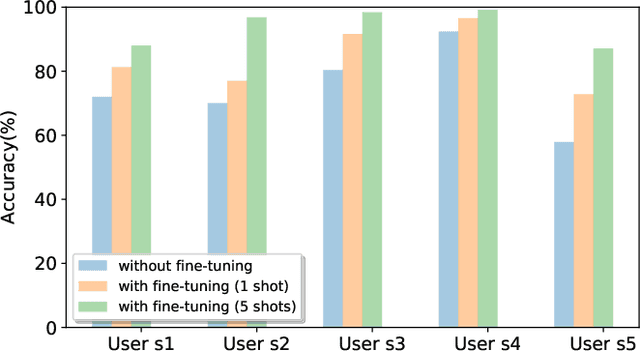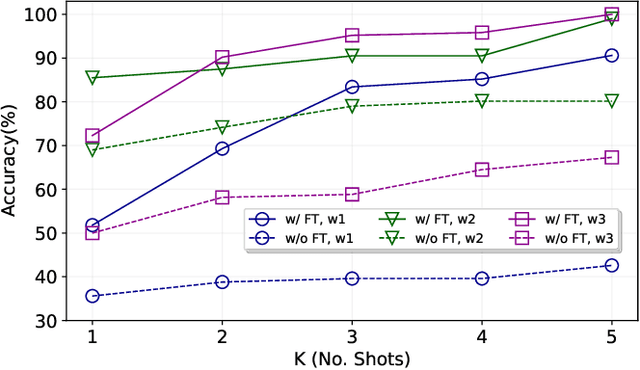Guolin Yin
Noise-Robust Radio Frequency Fingerprint Identification Using Denoise Diffusion Model
Mar 07, 2025Abstract:Securing Internet of Things (IoT) devices presents increasing challenges due to their limited computational and energy resources. Radio Frequency Fingerprint Identification (RFFI) emerges as a promising authentication technique to identify wireless devices through hardware impairments. RFFI performance under low signal-to-noise ratio (SNR) scenarios is significantly degraded because the minute hardware features can be easily swamped in noise. In this paper, we leveraged the diffusion model to effectively restore the RFF under low SNR scenarios. Specifically, we trained a powerful noise predictor and tailored a noise removal algorithm to effectively reduce the noise level in the received signal and restore the device fingerprints. We used Wi-Fi as a case study and created a testbed involving 6 commercial off-the-shelf Wi-Fi dongles and a USRP N210 software-defined radio (SDR) platform. We conducted experimental evaluations on various SNR scenarios. The experimental results show that the proposed algorithm can improve the classification accuracy by up to 34.9%.
FewSense, Towards a Scalable and Cross-Domain Wi-Fi Sensing System Using Few-Shot Learning
Mar 03, 2022



Abstract:Wi-Fi sensing can classify human activities because each activity causes unique changes to the channel state information (CSI). Existing WiFi sensing suffers from limited scalability as the system needs to be retrained whenever new activities are added, which cause overheads of data collection and retraining. Cross-domain sensing may fail because the mapping between activities and CSI variations is destroyed when a different environment or user (domain) is involved. This paper proposed a few-shot learning-based WiFi sensing system, named FewSense, which can recognise novel classes in unseen domains with only few samples. Specifically, a feature extractor was pre-trained offline using the source domain data. When the system was applied in the target domain, few samples were used to fine-tune the feature extractor for domain adaptation. Inference was made by computing the cosine similarity. FewSense can further boost the classification accuracy by collaboratively fusing inference from multiple receivers. We evaluated the performance using three public datasets, i.e., SignFi, Widar, and Wiar. The results show that FewSense with five-shot learning recognised novel classes in unseen domains with an accuracy of 90.3\%, 96.5\% ,82.7\% on SignFi, Widar, and Wiar datasets, respectively. Our collaborative sensing model improved system performance by an average of 30\%.
 Add to Chrome
Add to Chrome Add to Firefox
Add to Firefox Add to Edge
Add to Edge